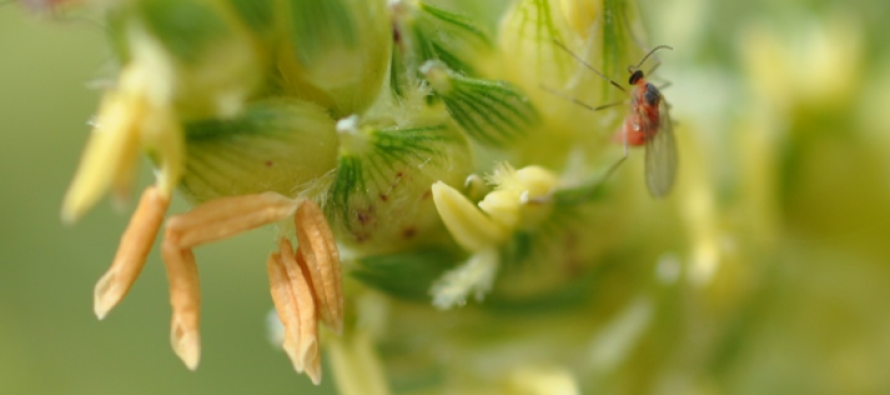Sorghum Midge Scouting and Management

Related Articles
- Mississippi Cotton Insect Situation of 2010: A Look Back 3
- Rice Insecticidal Seed Treatment Recommendations for Mississippi in 2011 0
- 2010 Row Crop Short Course Video Links 0
Latest Tweets
Often times, people think scouting for midge is difficult, mostly due to a lack of confidence. However, if you know what you are looking for and not finding anything, the likelihood is they simply aren’t there. High numbers of midge can be devastating to grain sorghum so many opt for an automatic insecticide application at 25 to 30% bloom. This management approach would be acceptable if the majority of sorghum fields had a high presence of midge, but this is unlikely. The chances are early planted sorghum rarely ever encounters a midge situation that requires control. Of course, with any biological system there will always be exceptions. Therefore, it is important to properly scout for this pest to avoid an unwarranted insecticide application that may flare sugarcane aphids. When dealing with this pest, timing is critical! It is important to understand when sorghum is susceptible because poorly timed applications can result in no midge protection.
Sorghum will begin flowering at the top of the head and work its way downward. Most varieties in Mississippi will start flowering almost as soon as the head begins to emerge from the boot and will complete bloom over a four to five day window. When grain sorghum starts to bloom yellow anthers will be sticking out of the glume. The portion of the head that is flowering with the yellow anthers will be the only area susceptible to midge. Once those anthers have turned orange, they will no longer be susceptible and an insecticide application will provide no protection. This is due to the fact that when the anthers are yellow, the glume is open for pollination. When that glume is open female midge will lay anywhere from 30 to 120 eggs, each individual egg is laid inside the glume. The egg will hatch and the grub will have a food source inside that kernel continuing its development to adult. Female midge will only live about a day.
The picture below is a good representation of a flowering grain sorghum head. You can see the progression of flowering from left to right where the grain sorghum is at about 30% flower, 60% flower, and complete flower. Note that in the second and third pictures, the orange colored area at the top of is head is the portion of the plant that has completed pollination and would not benefit from an insecticide application because it is no longer susceptible to midge.
Since grain sorghum rarely emerges in a uniform pattern, it makes management decisions more complicated. This just reiterates the importance of proper scouting. Scout what you have out there and what is currently flowering. If you are in a situation that is at the midge thresholds, then spray. If not, then continue to scout until that crop is outside the window of susceptible. You can’t wait until the majority of the head are out before you behind scouting. If you do and midge are at threshold, you will likely have yield losses in the areas that have already completed pollination. Pick a group of heads that are susceptible and treat based on scouting. You will likely avoid multiple sprays by doing so.
The photo above is a great picture of sorghum midge. They are a reddish orange fly about a 1/5th of a mosquito. There are two methods for scouting. Visually or with a plastic a bag. With the visual method, you will look directly at the sorghum head to observe the presence or lack of midge. At times, you can thump the neck to cause them to flutter for better observation. This method normally works well when the wind isn’t blowing. With the plastic bag method, simple place a gallon zip lock over the sorghum head and slightly shake the plant. The midge will fly to the top of the bag. It is not necessary to close the bag off, just as long as you don’t flip the bag upside down for the midge to fly out. The bag method works in any wind situation.
Pyrethroids are your best option for control because they are effective at low rates. I understand that some are concerned with flaring aphids and are looking for non-pyrethroid alternatives. This leaves options like dimethoate or Lorsban which do have activity on midge, however they tend to be less consistent than pyrethroids and still have the potential to flare sugarcane aphids.






Let me tell You a sad story ! There are no comments yet, but You can be first one to comment this article.
Write a comment